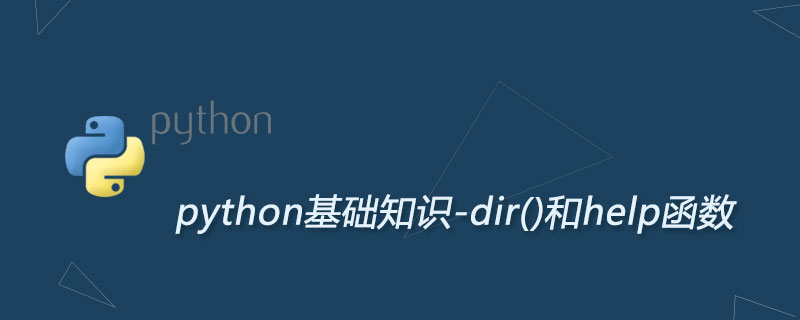Python join()方法:合并字符串及 dir()和help()帮助函数
Python dir()和help()帮助函数?

join() 方法也是非常重要的字符串方法,它是 split() 方法的逆方法,用来将列表(或元组)中包含的多个字符串连接成一个字符串。
使用 join() 方法合并字符串时,它会将列表(或元组)中多个字符串采用固定的分隔符连接在一起。例如,字符串“c.biancheng.net”就可以看做是通过分隔符“.”将 ['c','biancheng','net'] 列表合并为一个字符串的结果。
join() 方法的语法格式如下:
newstr?=?str.join(iterable)
此方法中各参数的含义如下:
newstr:表示合并后生成的新字符串;
str:用于指定合并时的分隔符;
iterable:做合并操作的源字符串数据,允许以列表、元组等形式提供。
【例 1】将列表中的字符串合并成一个字符串。
>>>?list?=?['c','biancheng','net'] >>>?'.'.join(list) 'c.biancheng.net'
【例 2】将元组中的字符串合并成一个字符串。
>>>?dir?=?'','usr','bin','env' >>>?type(dir) <class?'tuple'> >>>?'/'.join(dir) '/usr/bin/env'
Python dir()和help()帮助函数?
?

我们已经学习了很多字符串变量提供的方法,如 split()、join()、find()、index() 等,但这远远不是它的全部方法。今天给大家列举一些最常用的方法。
Python?非常方便,它不需要用户查询文档,只需掌握如下两个帮助函数,即可查看 Python 中的所有函数(方法)以及它们的用法和功能:dir():列出指定类或模块包含的全部内容(包括函数、方法、类、变量等)。help():查看某个函数或方法的帮助文档。
例如,要查看字符串变量(它的类型是 str 类型)所能调用的全部内容,可以在交互式解释器中输入如下命令:
>>>?dir(str) ['__add__',?'__class__',?'__contains__',?'__delattr__',?'__dir__',?'__doc__',?'__eq__',?'__format__',?'__ge__', ?'__getattribute__',?'__getitem__',?'__getnewargs__',?'__gt__',?'__hash__',?'__init__',?'__init_subclass__', ??'__iter__',?'__le__',?'__len__',?'__lt__',?'__mod__',?'__mul__',?'__ne__',?'__new__',?'__reduce__',? ??'__reduce_ex__',?'__repr__',?'__rmod__',?'__rmul__',?'__setattr__',?'__sizeof__',?'__str__',? ??'__subclasshook__',?'capitalize',?'casefold',?'center',?'count',?'encode',?'endswith',?'expandtabs',? ??'find',?'format',?'format_map',?'index',?'isalnum',?'isalpha',?'isdecimal',?'isdigit',?'isidentifier',? ??'islower',?'isnumeric',?'isprintable',?'isspace',?'istitle',?'isupper',?'join',?'ljust',?'lower',? ??'lstrip',?'maketrans',?'partition',?'replace',?'rfind',?'rindex',?'rjust',?'rpartition',?'rsplit',? ??'rstrip',?'split',?'splitlines',?'startswith',?'strip',?'swapcase',?'title',?'translate',?'upper',? ??'zfill'] >>>
上面列出了字符串类型(str)提供的所有方法,其中以“_”开头、“_”结尾的方法被约定成私有方法,不希望被外部直接调用。
如果希望查看某个方法的用法,则可使用 help() 函数。例如,在交互式解释器中输入如下命令:
>>>?help(str.title) Help?on?method_descriptor: title(...) ????S.title()?->?str ??? ????Return?a?titlecased?version?of?S,?i.e.?words?start?with?title?case ????characters,?all?remaining?cased?characters?have?lower?case. >>>
从上面介绍可以看出,title() 方法的使用形式是“str.title()”,其功能是将字符串中所有单词的首字母大写,其他所有字符全部改为小写。
通过使用 dir() 和 help() 函数,我们就可以查看字符串变量所能调用的所有方法,包括他们的使用方法和功能等。
本文来自互联网用户投稿,该文观点仅代表作者本人,不代表本站立场。本站仅提供信息存储空间服务,不拥有所有权,不承担相关法律责任。 如若内容造成侵权/违法违规/事实不符,请联系我的编程经验分享网邮箱:veading@qq.com进行投诉反馈,一经查实,立即删除!